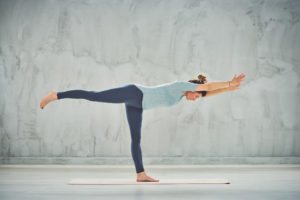 Man, was I amazed when I saw my aunt in the closet the other day. It’s not that she was in there, or even that she was on the floor, but rather how she was positioned.
Man, was I amazed when I saw my aunt in the closet the other day. It’s not that she was in there, or even that she was on the floor, but rather how she was positioned.
She was not hiding, nor did she fall, which is a concern for most 69-year-olds. Rather, it was that she was down in a perfect flat-footed squat like the kind you might see a three-year-old perform. It was amazing.
Advertisement
That kind of balance is not common in people her age. It’s not even particularly common in people than decades younger than her. When I commented, she said it was her party trick, walked to the center of her kitchen floor, and effortlessly entered a perfect deep squat before bouncing back up seamlessly.
With age, balance can naturally degrade. Muscle strength, lower body sensation, reflexes, and other factors can impede balance. And although it seems like something naturally attuned to humans and something that can be taken for granted, balance is actually a complex system.
Balance requires good sight, sensitive feet to detect terrain, swinging arms to keep you balanced, your brain’s sense of perception to identify how you fit in space, and lower body muscles to supply power to help you move, stop, and change direction.
All of this is what makes falling such a significant risk for people 60 and older. Strengthening your muscles and improving the connection between your brain and body is essential to reducing the risk of harmful falls.
Advertisement
There are a number of exercises that can strengthen the muscles in your lower body and improve balance, but there have been no specific tests to identify which is the best. That said, three exercises have stood out.
A Balance-Enhancing Exercise Program (BEEP) was tested in 2016 to see how certain exercises enhance balance in 60-80-year-olds. Those who regularly performed the exercises did a better job of staying balanced on even and uneven surfaces, had increased walking speed, and had a boost in overall confidence.
What might be best about these exercises is that they all mimic everyday movements. The exercises that make up BEEP are:
- Squats: Stand on the floor with your feet shoulder-width apart. Bend knees and picture yourself sitting on a chair or stool. Lower thighs as far as comfortable, keeping weight on your heels. Extend arms forward or place hands on a solid surface for stability, if needed. Hold for two seconds at the bottom before slowly returning to the starting position. Repeat 10 times.
- Heel and calf raise: Stand up and raise heels so you are up on your toes. Hold for 10 seconds (or as long as you can) and return to the starting position. Do 10 times.
- One-legged standing: Stand up tall and put hands on hips or hold a firm surface for stability. Raise one leg six to 12 inches off the floor and hold it for 20-30 seconds. Switch legs. Do each five times.
